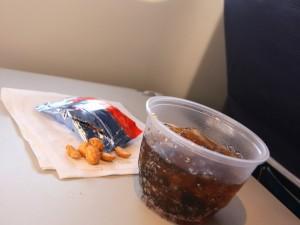 One of the most common food allergies is a peanut allergy. For those with an allergy to peanuts, the nut can cause them to suffer a severe and potentially fatal allergic reaction called anaphylaxis. Because of how dangerous exposure to peanuts can be to someone with the allergy, it’s highly recommended that they avoid peanuts and peanut products. But what happens when someone with a peanut allergy has to fly?
One of the most common food allergies is a peanut allergy. For those with an allergy to peanuts, the nut can cause them to suffer a severe and potentially fatal allergic reaction called anaphylaxis. Because of how dangerous exposure to peanuts can be to someone with the allergy, it’s highly recommended that they avoid peanuts and peanut products. But what happens when someone with a peanut allergy has to fly?
Air travel is possible for people with peanut allergies, but it requires a bit more work and planning. If you or a loved one has a peanut allergy, here’s what you need to do before and during a flight.
Before you fly…
Since you may need to make special requests, start planning your trip earlier to give airlines more lead time.
Before you book a flight, review the airline’s allergy policy, which should be posted on its website. You should also check what snacks the airline offers on its flights and consider choosing an airline that doesn’t serve peanut or tree nut snacks. Some airlines will serve non-peanut or tree nut snacks upon advance request.
When booking a flight, inform your reservation agent of your peanut allergy and request for them to relay that information to other personnel such as the gate agent and flight crew.
Consider the time of the flight you book – some planes are cleaned at the end of the day, meaning that early morning flights may reduce the risk of there being crumbs or food residue on seats.
Despite choosing an airline that doesn’t serve peanut or tree nut snacks on board, airlines can’t guarantee that you’ll have a peanut or tree nut-free flight because they can’t control what food other passengers bring on. However, communicating with a flight attendant may help – in some cases, if you notify a flight attendant of your allergy, he or she may be able to pass along your request to passengers seated near you to refrain from opening or eating any peanut products they brought with them.
Before you travel or even get to the airport, make sure you pack a kit with all your medications, including extra epinephrine auto-injectors or adrenaline, and copies of your prescriptions. TSA allows you to bring epinephrine on the plane with you; you may need to show the printed label on the medication. You may also want to show the prescription label from the pharmacy and a note from your doctor confirming your peanut allergy.
You should also let your doctor know ahead of time that you’re traveling. Make sure you bring with you a way to contact your doctor in case of emergency or if you need a prescription for additional auto-injectors.
You should also pack a copy of your Food Allergy and Anaphylaxis Emergency Care Plan with your medication.
At the airport…
Once you get through security, consider purchasing snacks to have during your flight in case your airline doesn’t serve non-peanut or tree nut snacks.
You should follow up with airline personnel about your allergy, confirming that the ticket agent and flight attendants are aware of it. You can also ask the gate agent if you may pre-board to inspect or clean your seat.
During the flight…
Whether or not you’re allowed to pre-board, you should inspect your seat and wipe it down before sitting down to prevent possible contact reactions or inadvertent skin contact with leftover food particles or spills. Wipe down your tray table too – eating food off of a contaminated surface could lead to accidentally ingesting allergens through cross-contact.
Never take a risk with food, especially while you’re in the air and away from access to medical care. Don’t eat anything you can’t be absolutely certain doesn’t contain or hasn’t come in contact with nuts.
And always keep your epinephrine or adrenaline medication within reach – don’t store it in the overhead bin.
Photo from Conde Nast Traveler.


